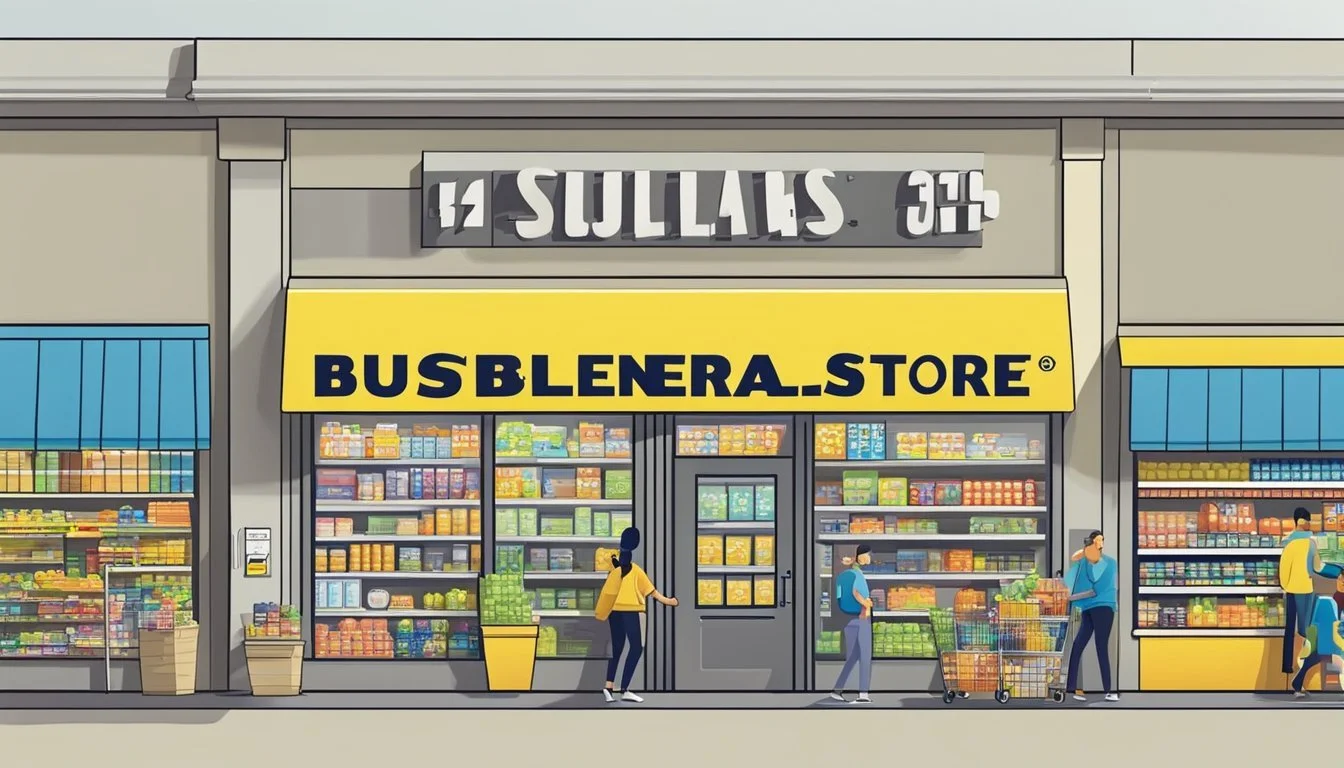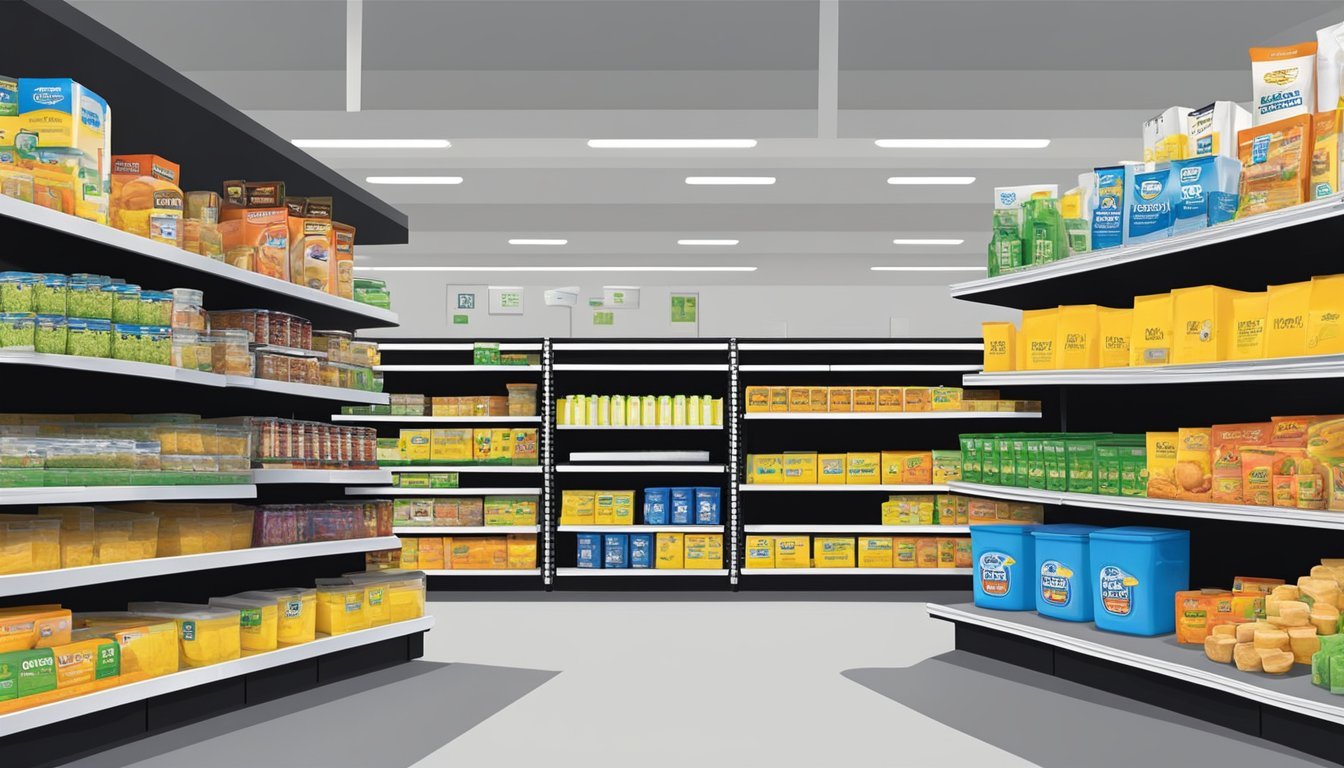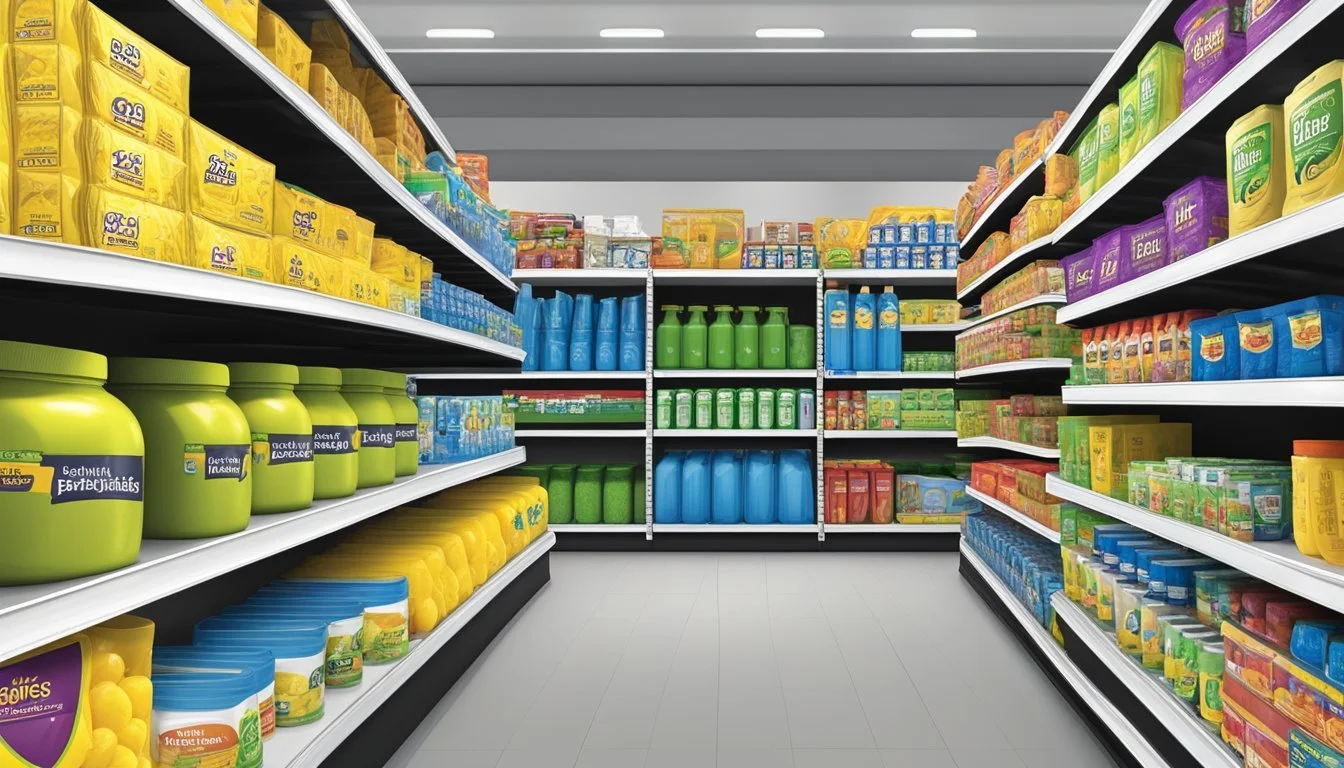Is Dollar General Cheaper Than Sam's Club?
A price comparison of two retail giants
When it comes to finding the best deals on everyday essentials, savvy shoppers often compare prices between different retailers. Dollar General and Sam's Club are two popular options that cater to budget-conscious consumers, but which one offers better value?
While Dollar General generally has lower prices on individual items, Sam's Club can be cheaper for bulk purchases of certain products. Dollar General excels in providing affordable options for household goods, cleaning supplies, and toiletries. Their smaller package sizes make it easier to manage expenses for those on a tight budget or with limited storage space.
Sam's Club, on the other hand, offers potential savings through bulk purchases of groceries, fresh produce, and meat. However, it's crucial to compare prices carefully, as some items at Sam's Club may actually be more expensive than at other stores. The membership fee should also be factored into the overall cost when considering shopping at Sam's Club.
Overview of Retail Chains
Dollar General and Sam's Club represent two distinct retail models in the American marketplace. These chains differ significantly in their business approaches, store designs, and customer access policies.
History and Business Models
Dollar General, founded in 1939, operates as a small-box discount retailer. The chain focuses on providing everyday essentials at low prices in convenient locations. Dollar General targets rural and suburban areas, often serving communities with limited retail options.
Sam's Club, established in 1983, is a warehouse club owned by Walmart. It offers bulk quantities of products at discounted prices to members. Sam's Club caters to both individual consumers and small businesses, providing a wide range of items from groceries to electronics.
Both companies have invested heavily in their supply chains to maintain competitive pricing. Dollar General emphasizes efficiency with a streamlined inventory, while Sam's Club leverages Walmart's vast distribution network.
Store Layout and Design
Dollar General stores are typically small, averaging around 7,400 square feet. Their layout is designed for quick shopping trips, with clearly organized aisles and prominent displays of frequently purchased items.
Sam's Club warehouses are much larger, often exceeding 100,000 square feet. The open floor plan features tall shelving units stocked with bulk items. Stores include specialized departments like optical centers, tire services, and electronics sections.
Dollar General's compact design allows for rapid expansion into new markets. Sam's Club's warehouse format enables bulk storage and display of a diverse product range, supporting its membership-based model.
Membership and Access
Dollar General does not require a membership. Stores are open to all customers, aligning with the company's mission of serving everyday needs.
Sam's Club operates on a membership model. Basic membership costs $45 annually, while the Plus membership is $100. Members gain access to all Sam's Club locations and exclusive services.
The membership structure at Sam's Club provides additional benefits like early shopping hours, cash rewards on qualifying purchases, and free shipping for online orders. This model supports Sam's Club's bulk-buying approach and helps foster customer loyalty.
Pricing Strategies
Dollar General and Sam's Club employ distinct pricing strategies to attract customers and drive sales. These approaches reflect their target markets and business models.
Price Points and Target Demographics
Dollar General focuses on low price points to appeal to budget-conscious shoppers. Many items are priced at $1 or less. The company targets rural and low-income areas where consumers prioritize affordability.
Sam's Club, as a warehouse club, caters to both individuals and businesses seeking bulk purchases. It offers larger quantities at discounted prices. Membership fees provide an additional revenue stream.
Dollar General keeps costs down by operating smaller stores with limited selections. Sam's Club leverages economies of scale through bulk purchasing and no-frills warehouse layouts.
Sales and Discounts
Dollar General runs frequent promotions on everyday essentials. Digital coupons and weekly ads highlight temporary price reductions.
Sam's Club offers member-exclusive savings events and instant savings on select items. Bulk purchases inherently provide per-unit discounts compared to traditional retailers.
Both chains may offer seasonal clearance sales to move excess inventory. Sam's Club provides additional perks for Plus members, such as early access to sales and extra discounts on services.
Store Brands vs. National Brands
Dollar General heavily promotes its private label products as low-cost alternatives to name brands. These store brands often have lower profit margins but help maintain competitive pricing.
Sam's Club offers a mix of national brands and its Member's Mark private label. The store brand provides quality products at lower prices than comparable national brands.
Both retailers negotiate with suppliers to secure competitive pricing on national brands. However, Dollar General's focus on smaller package sizes can make direct price comparisons challenging.
Product Assortment and Availability
Dollar General and Sam's Club offer distinct product selections to cater to different shopping needs. Their inventory management strategies and focus on specific product categories set them apart in terms of availability and variety.
General Merchandise and Grocery Selection
Dollar General provides a more limited selection of general merchandise and grocery items compared to Sam's Club. Dollar General focuses on everyday essentials and basic groceries in smaller package sizes. Their food offerings include pantry staples, snacks, and some frozen items.
Sam's Club, as a warehouse club, offers a wider range of products in bulk quantities. Their selection includes a variety of grocery items, fresh produce, meats, and bakery goods. Sam's Club also stocks a broader assortment of general merchandise, including electronics, clothing, and home goods.
Household Necessities
Both retailers carry household necessities, but with different approaches. Dollar General offers smaller package sizes of items like paper towels and kitchen trash bags, suitable for immediate needs or limited storage space.
Sam's Club sells these products in larger quantities, often at a lower per-unit cost. Their selection of household items is more extensive, including cleaning supplies, personal care products, and pet essentials.
Inventory Management
Dollar General's inventory strategy focuses on quick turnover of high-demand items. They stock a curated selection of products to maximize shelf space in their smaller store formats.
Sam's Club employs a different approach, maintaining larger inventories of popular items. Their warehouse model allows for greater product availability and variety. However, specific product selections may vary between locations based on regional preferences and demand.
Both retailers use data-driven inventory management systems to optimize stock levels and reduce out-of-stock situations. This helps ensure product availability for their customers.
Cost Analysis
Dollar General and Sam's Club offer different pricing structures and shopping experiences. Their cost effectiveness depends on several key factors.
Comparison of Overall Expenses
Dollar General focuses on everyday low prices for individual items. The chain stocks a variety of products at $1 or less, making it attractive for small purchases. Sam's Club, in contrast, emphasizes bulk buying. While the per-unit cost is often lower at Sam's Club, shoppers must purchase larger quantities.
For household staples and non-perishables, Sam's Club typically offers better value due to bulk pricing. However, Dollar General may be more cost-effective for smaller households or those with limited storage space. Fresh produce and perishables can be cheaper at Dollar General, as smaller quantities reduce waste.
Impact of Membership Fees
Sam's Club requires an annual membership fee, starting at $45 for a basic membership and $100 for a Plus membership. This fee must be factored into the overall cost analysis. For frequent shoppers, the savings from bulk purchases can offset the membership cost.
Dollar General has no membership requirement, allowing customers to shop without an upfront cost. This can be advantageous for occasional shoppers or those on tight budgets. However, regular Sam's Club shoppers may find that the membership pays for itself through accumulated savings on bulk purchases and exclusive member discounts.
The break-even point varies based on shopping habits and household size. Families or businesses with high consumption rates often benefit more from Sam's Club's membership model.
Shopping Experience
The shopping experience at Dollar General and Sam's Club differs significantly in terms of store layout, product selection, and purchasing options. Both retailers aim to provide value, but their approaches cater to distinct customer needs and preferences.
In-Store Shopping Vs. Online Ordering
Dollar General stores are typically smaller, offering a quick in-and-out shopping experience. Aisles are packed with everyday essentials, making it easy to grab necessities. Sam's Club warehouses, in contrast, feature wide aisles and bulk quantities, encouraging longer browsing sessions.
Online ordering capabilities vary between the two. Dollar General's app allows for easy product browsing and in-store pickup. Sam's Club offers a more robust online platform, complete with home delivery options and a scan-and-go feature for in-store purchases.
Product availability can differ between online and in-store inventories. Sam's Club often has exclusive online-only items, while Dollar General's online selection closely mirrors its physical stores.
Customer Service and Convenience
Dollar General emphasizes convenience with its numerous locations in rural and urban areas. Stores are often within a short drive, making quick trips feasible. Staff assistance is generally minimal, aligning with the self-service model.
Sam's Club provides a more comprehensive customer service experience. Membership perks include access to pharmacy services, optical centers, and tire centers. Staff members are readily available to assist with bulk purchases or product inquiries.
Wait times can vary. Dollar General's small format usually means shorter checkout lines. Sam's Club may have longer waits during peak hours but offers self-checkout and mobile checkout options to expedite the process.
Both retailers have implemented digital tools to enhance convenience. Dollar General's app features digital coupons, while Sam's Club's app includes a virtual membership card and the ability to track past purchases.
Additional Benefits and Programs
Sam's Club and Dollar General offer distinct perks beyond everyday savings. Their loyalty programs and external partnerships provide added value to shoppers.
Loyalty Programs and Rewards
Sam's Club provides a tiered membership structure. The basic Club membership costs $50 annually, granting access to exclusive deals and discounted fuel. Plus membership, at $110 per year, offers additional perks like early shopping hours and 2% cash back on qualifying purchases.
Dollar General's DG Digital Coupons program allows customers to load digital coupons to their account for instant savings at checkout. The DG App provides personalized offers and tracks reward progress.
Sam's Club credit cardholders earn cashback on purchases. Rewards are capped at $500 annually.
Partnerships and External Benefits
Sam's Club partners with various service providers. Members access discounts on auto buying, travel, and insurance.
The warehouse club offers free health screenings and optical services. Plus members receive free shipping on most online items.
Dollar General focuses on community initiatives. Their literacy foundation supports reading programs. The chain frequently sponsors local events and school fundraisers.
Both retailers have pharmacy services. Sam's Club provides member-exclusive pricing on prescriptions. Dollar General offers $4 generics at select locations.
Market Position and Competitors
Dollar General and Sam's Club occupy distinct positions in the retail landscape, with different competitive strategies and target markets. Their pricing models and product offerings cater to diverse consumer needs.
Comparative Analysis with Costco, Kroger, and Amazon
Dollar General competes primarily in the discount retail sector, targeting budget-conscious shoppers in rural and urban areas. Its main rivals include Dollar Tree and Family Dollar. Sam's Club, as a membership-based warehouse club, faces competition from Costco and BJ's Wholesale.
Costco leads the warehouse club market with higher annual sales than Sam's Club. Kroger, a traditional supermarket chain, competes with both Dollar General and Sam's Club in grocery sales. Amazon's e-commerce dominance poses challenges to brick-and-mortar retailers across segments.
Dollar General's small-format stores and focus on everyday essentials at low prices differentiate it from Sam's Club's bulk-buying model. Sam's Club's membership fees and larger product sizes appeal to different customer segments.
Industry Sales Trends
The discount retail and warehouse club sectors have shown resilience and growth in recent years. Dollar General has expanded its store count rapidly, reaching over 17,000 locations in 2023. This expansion strategy has driven sales growth and market share gains.
Sam's Club, owned by Walmart, has seen steady sales increases, benefiting from consumer demand for bulk purchases and value pricing. The company has invested in e-commerce capabilities to compete with Amazon and other online retailers.
Industry-wide, there's a trend towards omnichannel retailing, with both Dollar General and Sam's Club enhancing their digital offerings. Dollar General has introduced DG Pickup for online orders, while Sam's Club has expanded its Scan & Go technology for contactless shopping.
Inflation and economic uncertainty have boosted sales for value-oriented retailers like Dollar General and Sam's Club, as consumers seek ways to stretch their budgets.






